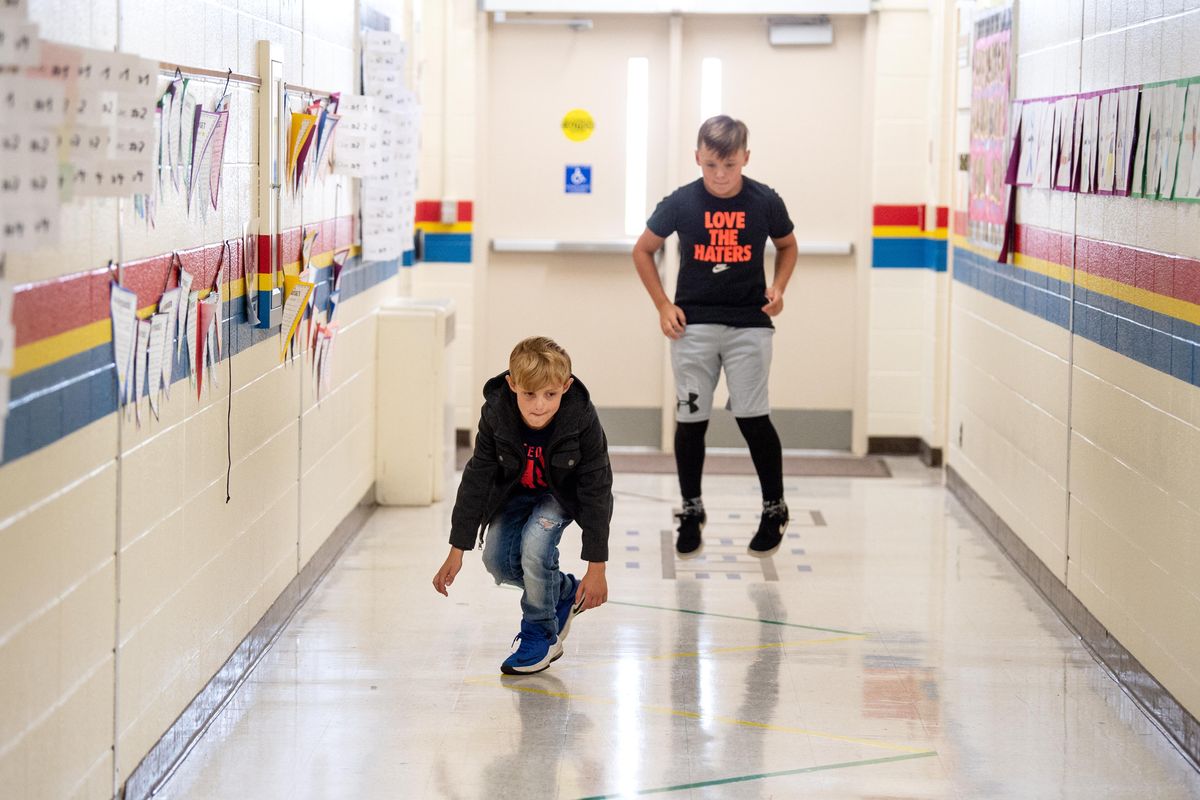Sensory pathway leads unfocused students back to learning at Balboa Elementary

Sometimes the path to better learning is just outside the classroom door.
At Balboa Elementary School in northwest Spokane, that path is brightly colored and eagerly followed by hundreds of children who need a break to refocus.
“It helps me get rid of energy whenever I’m unfocused,” sixth-grader Myles Gibson said of the two sensory pathways at Balboa. “It takes my mind off the world, and then when I get back, it’s easier.”
If that sounds much like the adult world, it is.
“Some students have a hard time focusing on anything,” said Brenda Lollis, the principal at Balboa. “Some of them are stressed about what’s happening at home, some might be seeing the other parent in a divorced family, or some might worry about food on their table.”
“We also have a lot of foster kids and a lot of kids with trauma,” Lollis said.

Seeing the need, Lollis sought answers. She got them thanks to a $2,500 grant from Numerica Credit Union and a portion of $36,148 the Spokane Public Schools Foundation awarded last spring to 35 different school projects.
The sensory pathway allows students to spend a few minutes walking, jumping, bouncing and otherwise pushing themselves through their distractions.
Experts believe the pathway is a good way for kids to develop motor skills such as balance, hand-eye coordination and spatial awareness.
Sensory paths are also an important part of a concept known as sensory play, which is designed to stimulate and improve the five senses.
The senses are heightened by following colored and numbered steps, along with pushing or sidestepping activity.
At Balboa, the brightly-colored steps are a favorite for second-grader Taiytum Diaz, who said that “when I’m stressed, they help me become less stressed. “
“I love the steps,” Diaz said.
It’s still early in the school year, but teachers are seeing positive results.
“Teachers like it because we’re giving (students) a positive break,” Lollis said. “We’re not seeing as many behaviors because we’re giving them a positive break and a positive out.”
“It’s also increased their cognition and retention of information, even though they’re out of the classroom,” Lollis said.
And for students who are fidgeting but don’t want to leave the class, the Spokane Public Schools Foundation chipped in another $700 for flexible seating.
The pathway at Balboa may lead to others.
“This is a great way for us to test this at a smaller level,” said Brian Coddington, the district’s director of communications and public relations.